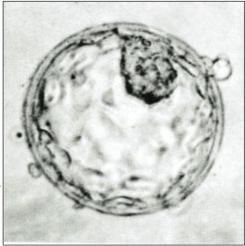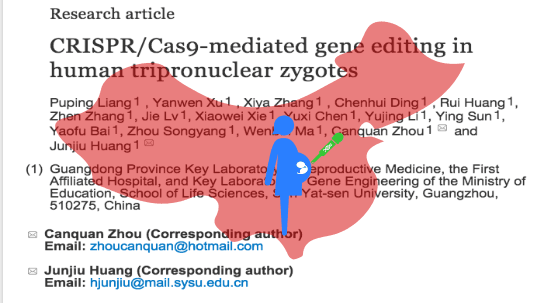Chinese Scientists Use CRISPR to Engineer First Human Embryo

In a remarkably bold and landmark study, scientists in China have reportedly edited genes in human embryos to erase a fatal blood disorder.
Published in Protein & Cell, researchers led by Sun Yat-sen at University of Guangzhou are confirming the widespread rumours about human trails of CRISPR/Cas9 gene editing. The rumours sparked widespread debates about ethical implications and the unfair usage of the same.
According to their paper titled “CRISPR/Cas9-mediated gene editing in human tripronuclear zygotes”, the researchers for now used ‘non-viable’ embryos which couldn’t have resulted in any form of live birth. The widely touted and popularized CRISPR/Cas9 gene editing technique was used to erase the genes causing β-thalassaemia in humans, a potentially fatal disorder of the blood. Thanks to fewer restrictions on human tests, the scientists became the first of many to conduct human trials.
Long Way Ahead for CRISPR/Cas9
The researchers are reported failure in their attempts to eradicate β-thalassaemia gene from the embryo. The system in which the enzyme complex of CRISPR/Cas9 binds to DNA and splices it has now been well studied in animal embryos and human cell lines. However, in human embryos the enzyme complex failed to repair the problematic gene. The researchers took precaution by creating ‘non-viable’ embryo following fertilisation of the embryo by two sperms. This prevents the chances of a live birth, however the embryo does reach the first stages of development.
Alarmingly Low Gene-Editing Success Rates
The team lead by Huang targeted the β-globin protein gene which is responsible for β-thalassaemia. Using 86 embryos, which the researchers injected with the CRISPR/Cas9 gene editing enzyme. Of the surviving embryos, 54 were tested for the spliced β-globin protein gene. Of these only 28 showed to be successfully spliced and just a fraction of these had the replacement β-globin gene. Not just that, a few off-target mutations were also found that were introduced by CRISPR/Cas9 technique.
The paper which was rejected by Nature and Science on ethical grounds, underlines the need to improve the technique before beginning experimentation in humans. Huang and his team will begin work on reducing the off-target mutations induced by CRISPR/Cas9 technique, using combination of other gene-editing techniques.
Source: Protein & Cell (Open Access)


